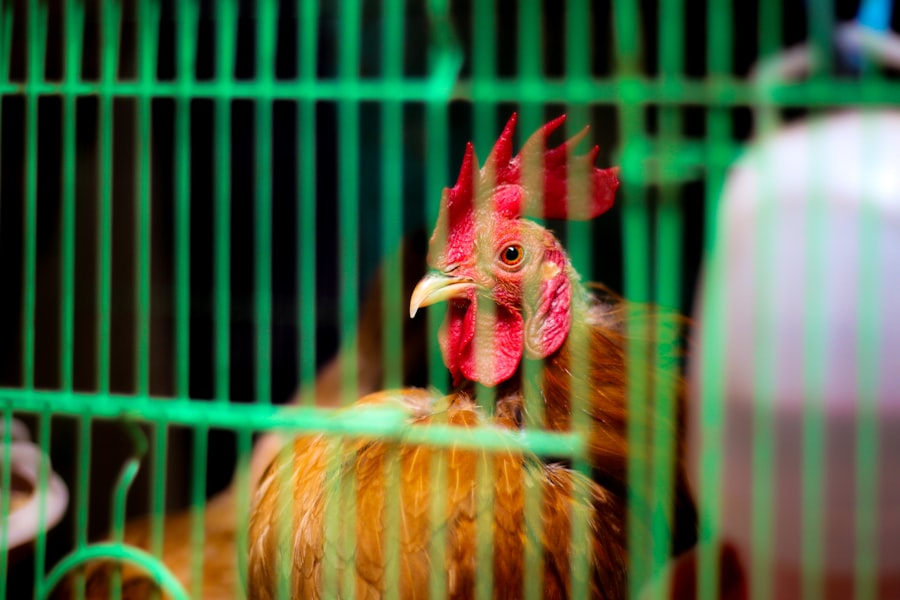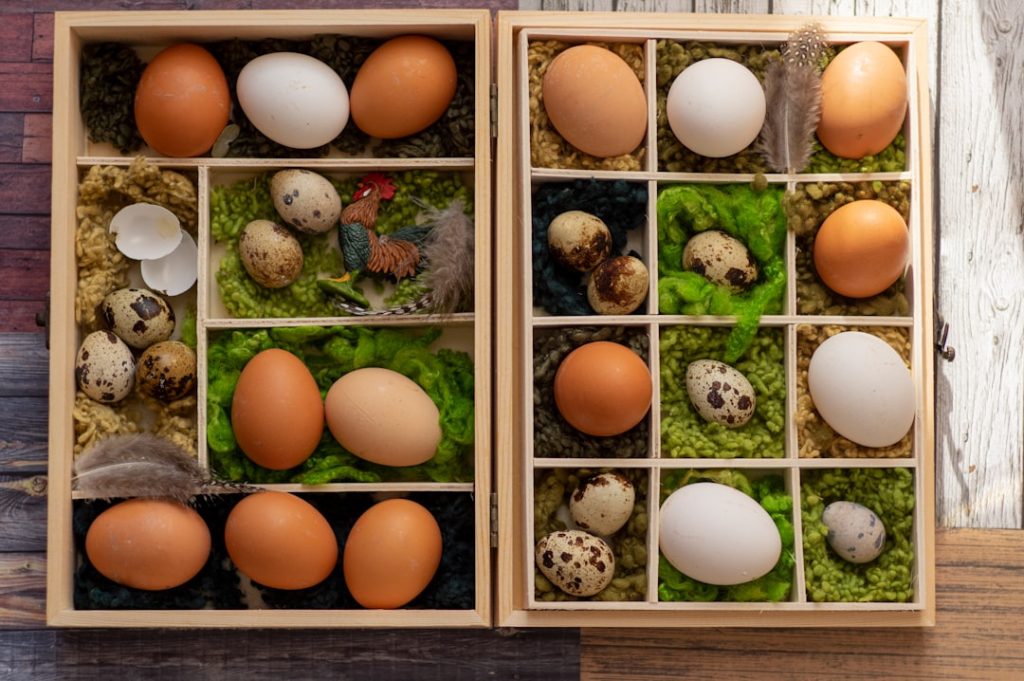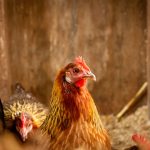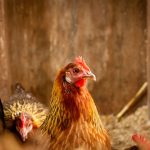Introducing new chickens to an existing flock requires careful planning and execution. This process is essential for maintaining the health and harmony of the entire flock, whether adding chicks or adult birds. Proper introduction techniques help prevent disease transmission, reduce stress levels, and minimize aggressive behavior among the chickens.
The first critical step in introducing new chickens is implementing a quarantine period. This involves isolating the new birds from the existing flock for a recommended duration, typically 30 days. During this time, caretakers should closely monitor the new chickens for any signs of illness or distress.
Quarantine serves two primary purposes: it prevents the potential spread of diseases to the established flock and allows the new birds to acclimate to their new environment gradually. During the quarantine period, it is important to maintain strict biosecurity measures. This includes using separate feeding equipment, clothing, and footwear when tending to the quarantined birds.
Regular health checks and observation of the new chickens’ behavior and appetite are crucial during this time. Any signs of illness should be addressed promptly, potentially extending the quarantine period if necessary. After the quarantine period, the introduction process can begin.
This typically involves a gradual approach, allowing the new and existing chickens to become familiar with each other’s presence without direct contact initially. Methods such as using adjacent pens or allowing supervised free-range time can help facilitate this process. Monitoring the chickens’ interactions closely during this phase is essential to identify and address any signs of aggression or stress.
Table of Contents
Key Takeaways
- Introducing new chickens to an existing flock can be a delicate process that requires careful planning and consideration.
- Quarantine is crucial to prevent the spread of diseases and parasites from new chickens to the existing flock.
- The recommended duration of the quarantine period is at least 30 days to ensure that any potential illnesses or parasites are identified and treated before introducing the new chickens to the existing flock.
- It is important to watch for signs of illness such as lethargy, decreased appetite, abnormal droppings, and respiratory issues during the quarantine period.
- Gradual introduction to the flock is essential to minimize stress and aggression among the chickens, and it is best done in a neutral territory to avoid territorial disputes.
- Monitoring the behavior and health of both the new and existing chickens during the integration process is important to ensure a smooth transition and to address any issues that may arise.
- Final integration into the flock should be done with caution, and close observation is necessary to ensure that the new chickens are fully accepted by the existing flock.
The Importance of Quarantine
Preventing Disease and Parasite Transmission
This separation helps prevent the potential spread of diseases and parasites to the existing flock, as well as allows you to closely monitor the health and behavior of the new birds. Quarantine also provides an opportunity for the new chickens to adjust to their new surroundings and for you to assess their overall health. It is not uncommon for chickens to carry diseases without showing any symptoms, so quarantine serves as a precautionary measure to protect the health of your entire flock.
Monitoring Health and Behavior
By keeping the new birds separate during this initial period, you can observe them for any signs of illness, such as respiratory issues, diarrhea, or unusual behavior. This proactive approach can help prevent the introduction of contagious diseases and minimize the risk of health issues within your existing flock.
A Proactive Approach to Flock Health
Quarantine is a critical step in maintaining the health and well-being of your entire flock. By taking the time to isolate and monitor new birds, you can ensure a safe and healthy environment for all your chickens.
Duration of Quarantine Period
The duration of the quarantine period for new chickens can vary depending on individual circumstances, but it is generally recommended to quarantine them for a minimum of two weeks. This timeframe allows for any potential illnesses or parasites to become apparent, as well as gives the new birds time to acclimate to their new environment. In some cases, it may be advisable to extend the quarantine period to four weeks, especially if the new chickens come from an unknown or high-risk source.
During the quarantine period, it is important to closely monitor the new chickens for any signs of illness or behavioral abnormalities. This includes observing their eating and drinking habits, as well as their overall activity level and interaction with other birds. By being vigilant during this time, you can identify any potential health issues early on and take appropriate measures to address them before introducing the new birds to the existing flock.
Signs of Illness to Watch for
When quarantining new chickens, it is essential to be on the lookout for any signs of illness or distress. Common indicators of illness in chickens include respiratory symptoms such as coughing, sneezing, or nasal discharge, as well as diarrhea, lethargy, decreased appetite, and abnormal behavior. Additionally, keep an eye out for any signs of parasites such as mites or lice, which can be easily transmitted to other birds if not addressed promptly.
It is important to note that some diseases can be asymptomatic in chickens, meaning they may not show any outward signs of illness. This is why quarantine is so crucial when introducing new birds to an existing flock. By closely monitoring the new chickens for any potential health issues, you can help prevent the spread of diseases and ensure the overall well-being of your entire flock.
Gradual Introduction to the Flock
Once the quarantine period has been completed and the new chickens have been given a clean bill of health, it is time to begin the gradual introduction process. This involves allowing the new birds to interact with the existing flock in a controlled manner, typically through a physical barrier such as a wire fence or netting. This allows the birds to see and hear each other without direct physical contact, which helps reduce stress and aggression during the initial introduction phase.
Gradual introduction also gives the birds time to establish a pecking order and become familiar with each other before being fully integrated into the same living space. It is important to closely monitor their interactions during this time and be prepared to intervene if any aggressive behavior occurs. By taking a slow and cautious approach to integration, you can help minimize conflicts and ensure a smoother transition for both the new and existing members of the flock.
Monitoring Behavior and Health

Close Observation is Key
As the new chickens are gradually introduced to the existing flock, it is essential to continue monitoring their behavior and health closely. Pay attention to how they interact with other birds, their eating and drinking habits, and any signs of stress or aggression.
Establishing a Pecking Order
It is not uncommon for some level of pecking order establishment to occur during this time, but excessive aggression or bullying should be addressed promptly.
Maintaining Overall Flock Health
Additionally, continue to observe the overall health of all birds in the flock, including the new additions. Keep an eye out for any signs of illness or parasites, and be proactive in addressing any issues that arise.
A Smooth Integration Process
By staying vigilant and responsive to any changes in behavior or health, you can help ensure a smooth and successful integration process for your entire flock.
Final Integration into the Flock
Once the new chickens have been gradually introduced to the existing flock and have shown positive interactions and good health, it may be time for their final integration into the main living space. This should be done with caution and supervision, especially during feeding times when competition for resources may lead to aggression. It is important to provide plenty of space and resources for all birds in the flock to minimize conflicts and ensure a harmonious living environment.
Keep an eye on their interactions during this final integration phase and be prepared to intervene if necessary. With patience and careful observation, you can help facilitate a successful integration process that allows all members of your flock to coexist peacefully. In conclusion, introducing new chickens to an existing flock requires careful planning and consideration for the health and well-being of all birds involved.
By prioritizing quarantine, gradual introduction, and ongoing monitoring, you can help ensure a smooth and successful integration process that promotes harmony within your flock. With proper care and attention, your new feathered friends can become valued members of your existing flock, enriching your poultry-keeping experience for years to come.
If you’re considering adding new chickens to your flock, it’s important to know how long you should keep them separate from the rest of your birds. According to a helpful article on Poultry Wizard, it’s recommended to keep new chickens separate for at least 30 days to prevent the spread of diseases and to allow them to acclimate to their new environment. This article provides valuable insights into the best practices for introducing new chickens to your existing flock. Learn more about the importance of keeping new chickens separate here.
FAQs
What is the recommended time to keep new chickens separate?
The recommended time to keep new chickens separate from the existing flock is typically 4-6 weeks. This allows the new chickens to acclimate to their new environment and reduces the risk of introducing diseases to the existing flock.
Why is it important to keep new chickens separate?
Keeping new chickens separate is important to prevent the spread of diseases and to allow the new chickens to establish a pecking order without being bullied by the existing flock. It also gives the new chickens time to build up their immunity before being exposed to the existing flock.
What should be considered when introducing new chickens to an existing flock?
When introducing new chickens to an existing flock, it’s important to consider the size of the coop and run, the temperament of the existing flock, and the age and health of the new chickens. Slow introductions and supervision during the integration process can help reduce stress and aggression among the chickens.
What signs indicate that new chickens are ready to be integrated with the existing flock?
Signs that new chickens are ready to be integrated with the existing flock include observing them interacting through a barrier, displaying confident and assertive behavior, and not showing signs of fear or stress when in close proximity to the existing flock. It’s important to monitor their behavior and interactions before fully integrating them.
Meet Walter, the feathered-friend fanatic of Florida! Nestled in the sunshine state, Walter struts through life with his feathered companions, clucking his way to happiness. With a coop that’s fancier than a five-star hotel, he’s the Don Juan of the chicken world. When he’s not teaching his hens to do the cha-cha, you’ll find him in a heated debate with his prized rooster, Sir Clucks-a-Lot. Walter’s poultry passion is no yolk; he’s the sunny-side-up guy you never knew you needed in your flock of friends!







